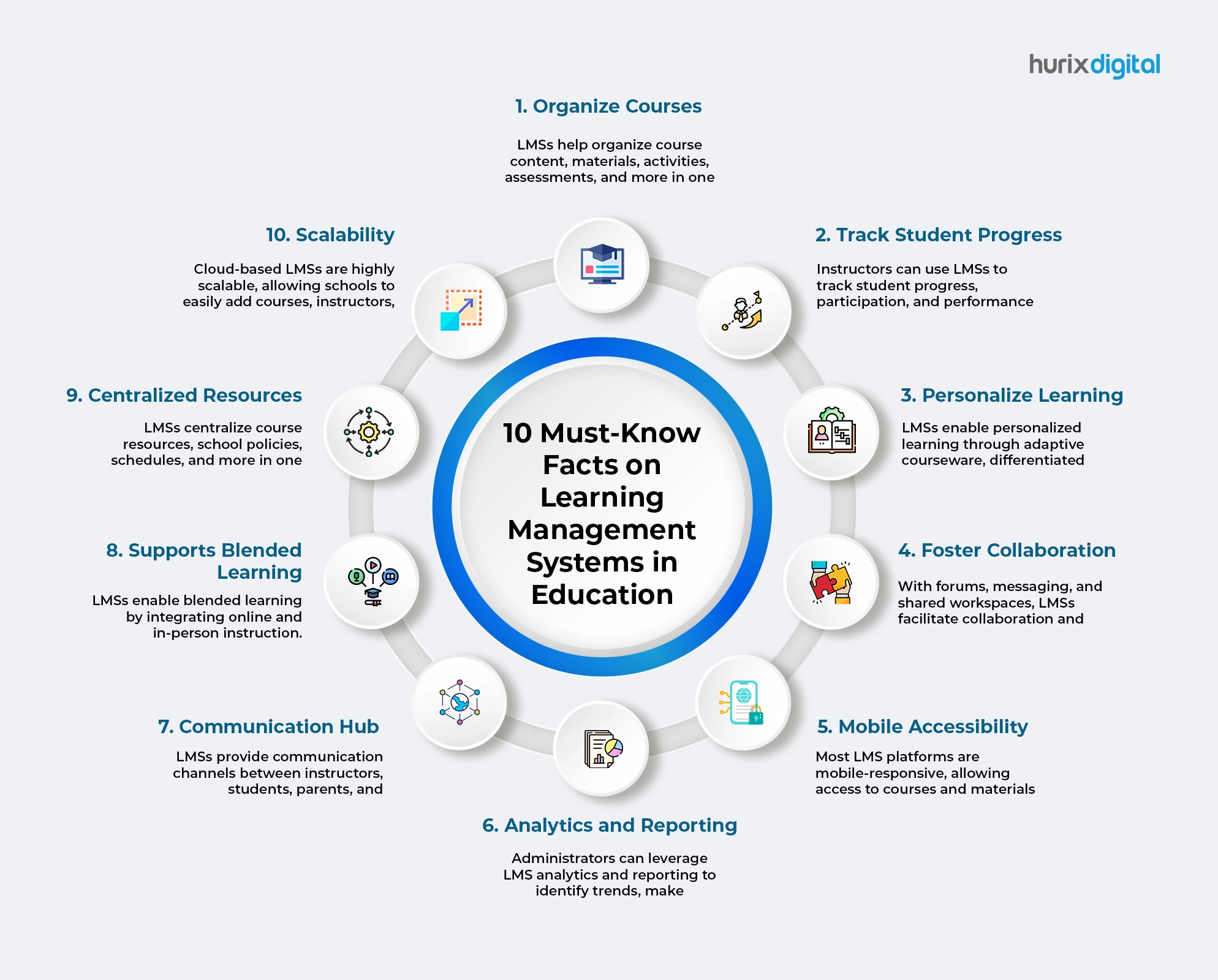Educational institutions are increasingly using Learning Management Systems in Education to streamline teaching, improve student engagement, and enhance administrative processes. These platforms help educators organize coursework, track progress, and facilitate communication between students and instructors.
By integrating technology, schools and universities create more flexible learning environments, making education accessible to a wider audience.
Revolutionize your digital classroom with Hurix Digital. Contact Us Now to learn more.

Why Learning Management Systems in Education Are Important
A well-designed system helps institutions manage course content, assignments, and grading while providing a structured learning experience for students. Some key advantages include:
- Simplified course management – Teachers can upload materials, create assignments, and automate grading.
- Flexible learning options – Students can access lessons anytime, making remote education more effective.
- Data-driven insights – Analytics help educators track student performance and adjust teaching methods.
Key Features of Learning Management Systems in Education
1. Course Organization
An LMS provides a centralized location for instructors to store and manage course materials. Students can easily find readings, videos, and assignments in one place.
2. Student Performance Tracking
Tracking student engagement and academic progress allows teachers to identify struggling learners and provide targeted support.
3. Personalized Learning Paths
Adaptive learning technology enables customized content delivery, helping students learn at their own pace based on their performance and needs.
4. Interactive Collaboration Tools
Discussion boards, group projects, and real-time messaging enhance student interaction, making online learning more engaging.
5. Mobile Compatibility
Most platforms are accessible on multiple devices, ensuring students can continue their education anytime and anywhere.
6. Data Analytics and Reporting
Teachers and administrators can generate reports to measure student success, course effectiveness, and areas for improvement.
7. Communication and Notifications
An LMS serves as a communication hub, allowing direct interaction between students, teachers, and parents through announcements and alerts.
Choosing the Right LMS for Education
When selecting a platform, institutions should consider:
✔ Ease of use – A user-friendly interface benefits both students and teachers.
✔ Integration capabilities – Compatibility with existing tools enhances functionality.
✔ Security measures – Protecting student data is a top priority.
✔ Scalability – A good system grows with the institution’s needs.
Final Thoughts
Implementing Learning Management Systems in Education improves efficiency, enhances student engagement, and simplifies administrative tasks. Whether for K-12 schools, universities, or corporate training, these platforms support a structured and interactive learning experience.



